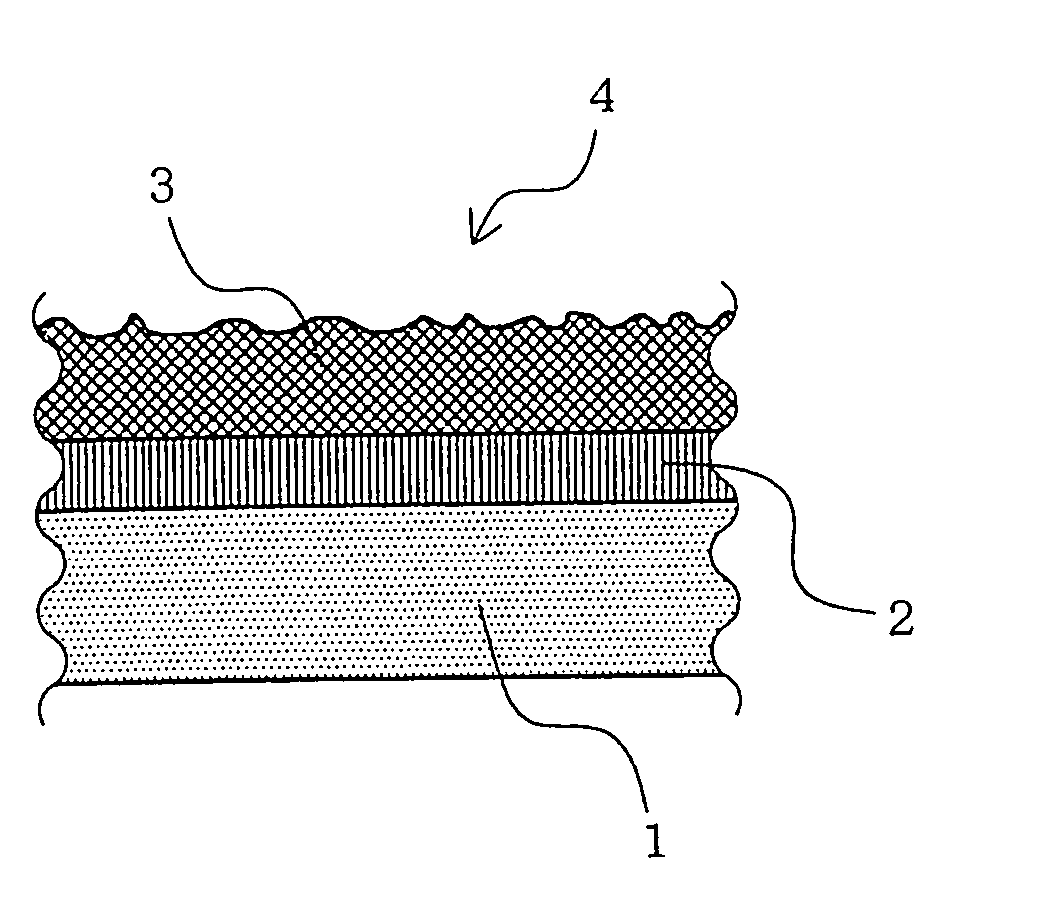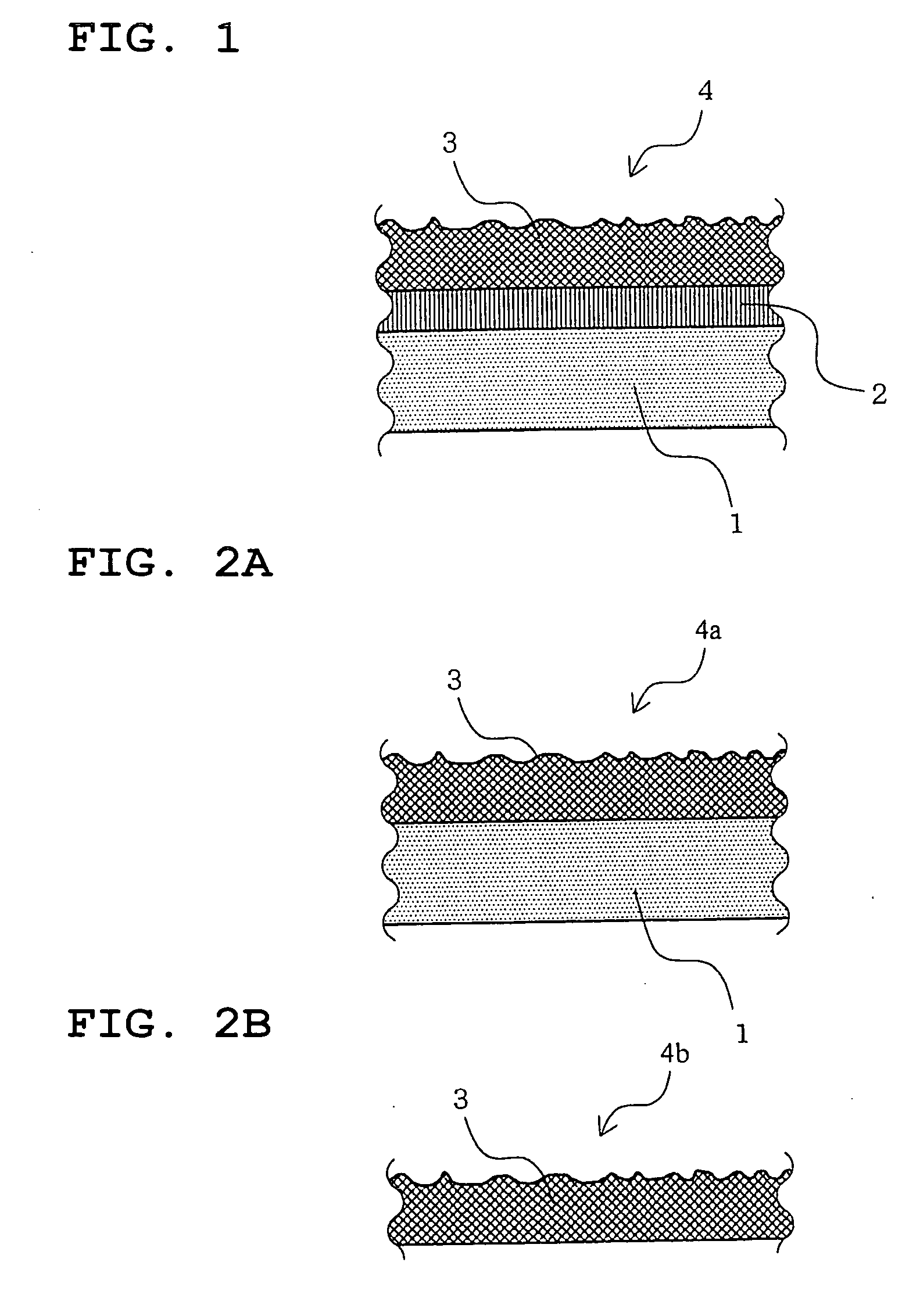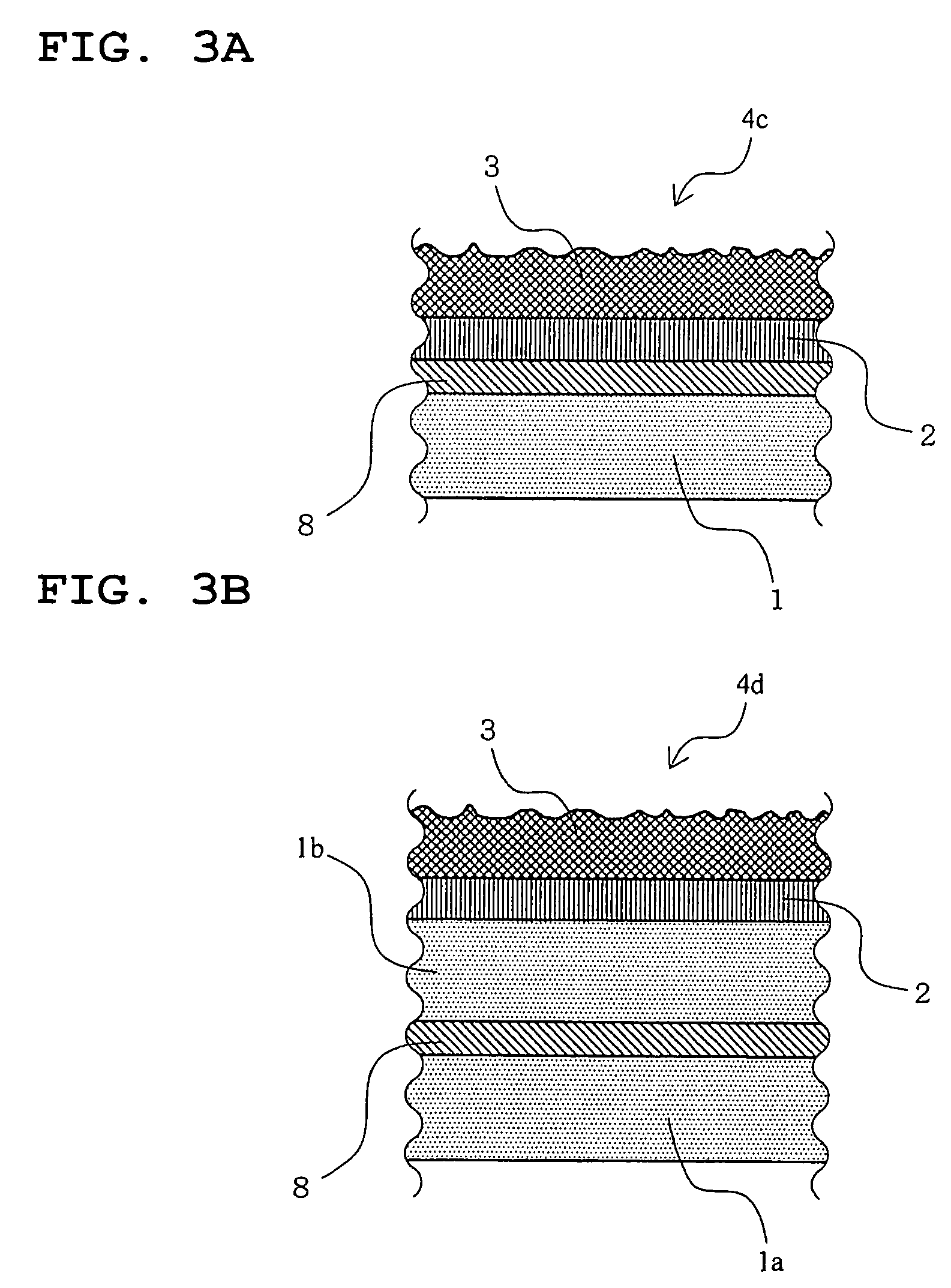Release liner and pressure-sensitive adhesive tape or sheet employing the same
a technology of pressure-sensitive adhesive tape or sheet and release liner, which is applied in the direction of film/foil adhesives, instruments, transportation and packaging, etc., can solve the problems of considerable impairment of appearance, corrosion of inner parts of electronic appliances and operation errors, and significant impairment of adhesive performance, so as to achieve smooth separation
- Summary
- Abstract
- Description
- Claims
- Application Information
AI Technical Summary
Benefits of technology
Problems solved by technology
Method used
Image
Examples
example 1
[0107] Low-density polyethylene (trade name “L-1850A” manufactured by Asahi Kasei Santec) was laminated to a poly(ethylene terephthalate) film (trade name “Lumirror S-105-50” manufactured by Toray Industries, Inc.; thickness, 50 μm; substrate) by tandem extrusion laminating at a die lip temperature of 325° C. in a thickness of 10 μm on a dry basis to form an undercoat layer. Subsequently, a resin composition (ingredients for constituting a release layer) prepared by mixing 100 parts of a resin blend (trade name “Moretec 0628D” manufactured by Idemitsu Petrochemical Co., Ltd.; resin blend consisting of linear low-density polyethylene and 15% by weight low-density polyethylene added thereto) with 300 parts of an ethylene / propylene copolymer (trade name “Tafmer P0180” manufactured by Mitsui Chemicals, Inc.) was laminated to the undercoat layer by extrusion laminating at a die lip temperature of 273° C. in a thickness of 10 μm on a dry basis to form a release layer. Furthermore, a cooli...
example 2
[0112] A release liner was produced in the same manner as in Example 1, except that a resin composition prepared by mixing 100 parts of a resin blend (trade name “Moretec 0628D” manufactured by Idemitsu Petrochemical Co., Ltd.; resin blend consisting of linear low-density polyethylene and 15% by weight low-density polyethylene added thereto) with 100 parts of an ethylene / propylene copolymer (trade name “Tafmer P0180” manufactured by Mitsui Chemicals, Inc.) was used as ingredients for constituting a release layer, and that a surface-irregular release layer was formed which had a surface roughness Ra of 2 μm and a maximum roughness of 8 μm and in which the surface irregularities were recesses and protrusions irregularly different in shape and disposed in irregular arrangement.
[0113] A pressure-sensitive adhesive tape was produced in the same manner as in Example 1, except that this release liner was used.
example 3
[0120] Low-density polyethylene [density, 0.918 g / cm3; melt flow rate (MFR), 5.0 g / 10 min (190° C.); trade name “L-1850A” manufactured by Asahi Kasei Santec] was laminated to the aluminum layer side of a poly(ethylene terephthalate) film having a vapor-deposited aluminum layer on one side (trade name “Metalumy TS” manufactured by Toh-Meta Co., Ltd.; thickness, 50 μm; substrate) by tandem extrusion laminating at a die lip temperature of 325° C. in a thickness of 10 μm on a dry basis to form an undercoat layer. Subsequently, a resin composition (ingredients for constituting a release layer) prepared by mixing 100 parts of a resin blend [density, 0.916 g / cm3; MFR, 6.0 g / 10 min (190° C.); trade name “Moretec 0628D” manufactured by Idemitsu Petrochemical Co., Ltd.; resin blend consisting of linear low-density polyethylene and 15% by weight low-density polyethylene added thereto] with 300 parts of an ethylene / propylene copolymer [density, 0.88 g / cm3; MFR, 4.5 g / 10 min (190° C.); trade nam...
PUM
| Property | Measurement | Unit |
|---|---|---|
| surface roughness Ra | aaaaa | aaaaa |
| peel angle | aaaaa | aaaaa |
| surface roughness | aaaaa | aaaaa |
Abstract
Description
Claims
Application Information
 Login to View More
Login to View More - R&D
- Intellectual Property
- Life Sciences
- Materials
- Tech Scout
- Unparalleled Data Quality
- Higher Quality Content
- 60% Fewer Hallucinations
Browse by: Latest US Patents, China's latest patents, Technical Efficacy Thesaurus, Application Domain, Technology Topic, Popular Technical Reports.
© 2025 PatSnap. All rights reserved.Legal|Privacy policy|Modern Slavery Act Transparency Statement|Sitemap|About US| Contact US: help@patsnap.com



